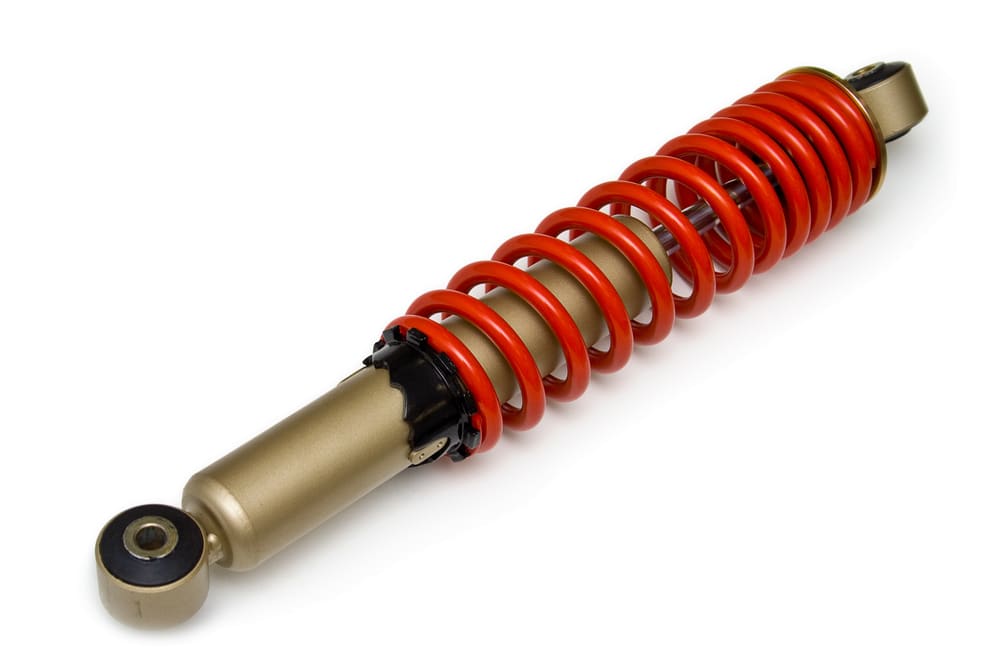

In the land of aftermarket suspensions there are spring kits, air bag kits, adjustable shocks and struts, and a variety of other approaches to improving handling and/or changing ride height, but when the subject is improving high-speed handling, the most hushed tones and awed looks are reserved for the “coilover.” But what exactly are coilover suspension kits and, more importantly, do they improve handling enough to justify their often considerable expense?
First, let’s understand a coilover. Most cars today employ one of a few basic suspension designs:
Double control arm (also known by a variety of other names including wishbone or double wishbone)
Strut (sometimes called MacPherson strut)
Multi-link
Torsion bar
The “coilover” is also sometimes called a coil-over-shock, a variation on the strut design.
Struts and coil springs
A typical strut suspension employs a coil (spiral-shaped) spring, a load-bearing shock absorber which is usually called a strut (a strut is just a shock absorber that also bears part or all of the vehicle’s weight), and a single control arm. Usually the coil spring is mounted at the top of the strut, so compression of the spring, the strut, or both allows the wheel to move upward toward the car body.
How a coilover works
A coilover setup is similar but uses a longer coil spring with a shock absorber mounted right down the length of the coil, so that the coil is around or “over” the shock. For the wheel to move upward in a coilover setup, both the spring and the shock must compress. The spring bears all the weight while the shock absorber damps any bouncing of the spring.
Is this all a good thing? The answer is that in theory it’s not necessarily better, but there can be practical advantages. First, the other setup can be just as good from a performance perspective. For example, if the double wishbone design were inferior it’s unlikely the famed Porsche 959 and Ferrari F40 would have used it.
But most of us don’t drive million dollar super-cars and most cars aren’t designed for high-speed handling at all costs. So in practice, most suspensions, regardless of their design, represent compromises in handling, ride comfort, and cost. In almost any car you are driving it’s likely that its handling can be improved in exchange for a harsher ride, and of course, some money. And it’s also likely that some adjustability can be included, which usually isn’t true of factory systems.
The advantages of coilovers
Handling and adjustability are coilovers’ big advantages. It’s difficult to change a car’s wishbone setup without throwing everything else about the suspension out of kilter, but a well-designed coilover setup can allow changes in handling characteristics without adversely affecting everything else (much). That’s why the top performance-oriented suspension kits tend to be coilovers. A good coilover design can improve the handling of almost any car, while allowing you to make adjustments in handling characteristics and sometimes even ride height over time.
Notice the last paragraph is about “well-designed” coilovers. Unfortunately, installing some coilover setups on some cars can actually hurt handling rather than improve it. While the specifics vary enough that you’ll want to do a lot of research, there are two rules of thumb:
More expensive systems tend to work better than less expensive ones. High price is no guarantee of handling improvements, but inexpensive setups often work poorly.
If your car already handles well, it will be difficult and probably expensive to improve it much.
A coilover setup can cost several thousand dollars before your mechanic even takes it out of the box, so it pays to do a lot of homework before having one installed. In many cases coilovers will improve a car’s handling.



